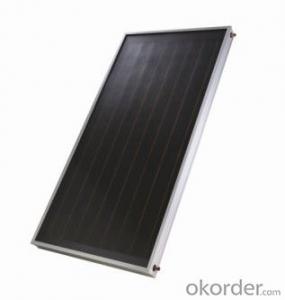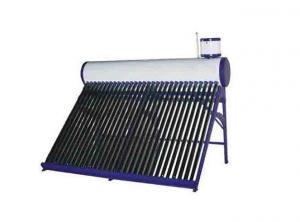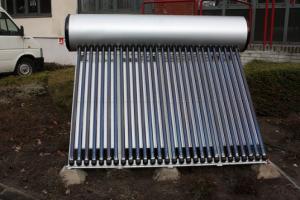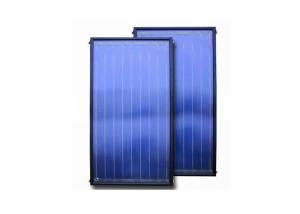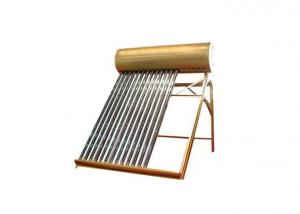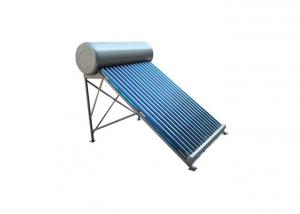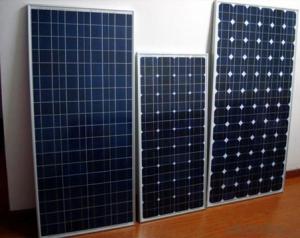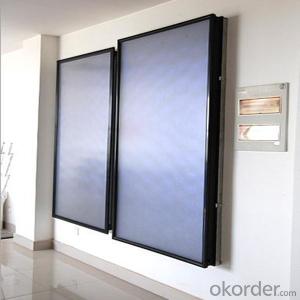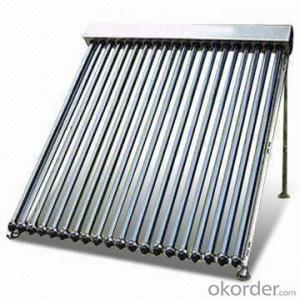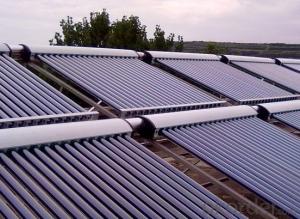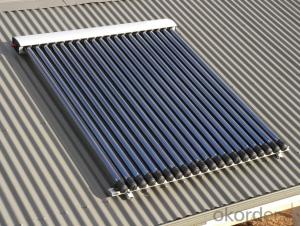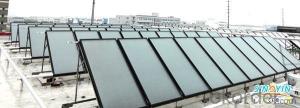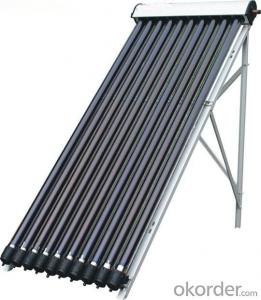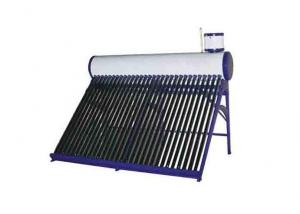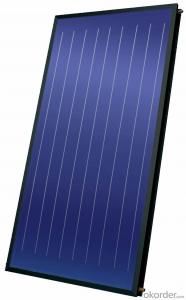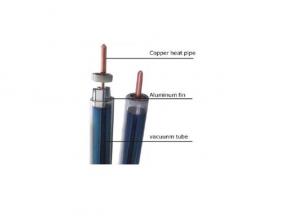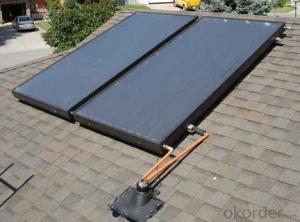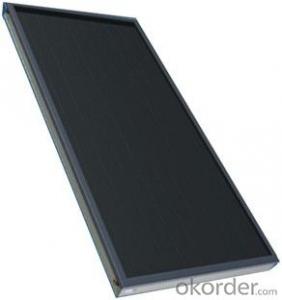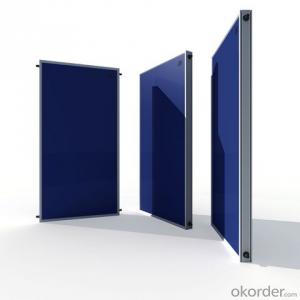Velux Solar Thermal Collectors for Swimming Pool and Hotel
- Loading Port:
- Shanghai
- Payment Terms:
- TT OR LC
- Min Order Qty:
- 500 pc
- Supply Capability:
- 10000 pc/month
OKorder Service Pledge
OKorder Financial Service
You Might Also Like
Specifications
1.Brand: THE SOLAR;
2.Certificate: CE, SRCC&Solar Keymark;
3.Place: Next to Shanghai;
4.Quality: Testing in Germany Lab.
SC serials is a kind of solar collector, It used with heat preservation water tank, solar power workstation and the heat pipe collector. The solar collector is consisted of super conducting vacuum heat collecting tube and header, so it's of great efficiency of heat collecting. The absorbing percentage of the glass vacuum collector is more than 94%. In the sunny days of spring or autumn, each collecting tube could make the water up to 90 degrees centigrade only in 2.5 hours.
Advantage:
• Material of manifold is SUS304 stainless steel or aluminum alloy
• Copper heat pipe for rapid heat transfer.
• Max Pressure bearing: 8bar.
• ISO9001 / CE certificate/EN-12975.
• 5 years warranty.
• Corrosion resistant brazed copper header.
• Attractive design, standard frame suitable for pitched roof or flat roof .
• Easy plug-in installation.
• Improves the environment and save your fuel cost.
Imported Bluetec Heat Absorbing Coat, Gathering Energy Wisdom
Bluetec heat absorbing board, imported from Germany, with magnetron sputtering technology. The surface is coated with gradient-changed multilayer(AI-N/AI), which leads to the good spectral selectivity and the extremely high thermal efficiency.
Top Level Heat Efficiency, Enjoy Warmth from Sunshine
Solar absorption rate reaches 95%, emissivity is only 5%. Energy saving and low carbon release to make comfortable enjoyment.
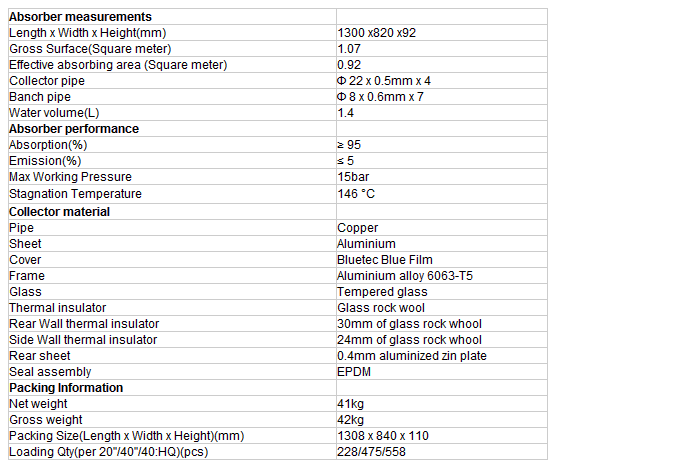
- Q: What materials are used to make solar collectors?
- Solar collectors are typically made using materials such as glass, copper, aluminum, and various types of polymers.
- Q: Are there any drawbacks to using solar collectors?
- Yes, there are a few drawbacks to using solar collectors. Firstly, solar collectors are dependent on sunlight, so they may not be as efficient in areas with limited sunshine or during cloudy days. Secondly, the initial installation cost of solar collectors can be high, although the long-term savings on energy bills can offset this. Additionally, solar collectors require a significant amount of space for installation, which may not be feasible for all properties. Lastly, the production and disposal of solar panels can have some environmental impacts, although they are generally considered much less harmful than traditional energy sources.
- Q: How do solar collectors affect land use?
- Solar collectors, such as solar panels or solar thermal systems, have a significant impact on land use. Unlike traditional energy sources like coal or gas power plants, solar collectors require large surface areas to harness sunlight and convert it into usable energy. This land requirement can vary depending on the type and capacity of the solar collector system. One of the most common forms of solar collectors, photovoltaic (PV) solar panels, are typically installed on rooftops or on open land. When installed on rooftops, solar panels utilize existing infrastructure and do not require additional land use. However, when installed on open land, solar farms or solar parks are created, which can occupy significant areas of land. The land used for solar collectors can have both positive and negative effects on the environment and surrounding communities. On the positive side, solar collectors produce clean and renewable energy, reducing greenhouse gas emissions and dependence on fossil fuels. This contributes to combating climate change and promoting sustainable development. Solar collectors also have the potential to reclaim or repurpose land that may have been previously unsuitable for agriculture or other uses. For example, solar farms can be installed on degraded or contaminated land, transforming it into productive and environmentally friendly energy-generating sites. However, the land use for solar collectors can also have some drawbacks. Large-scale solar farms may require clearing of vegetation, impacting local ecosystems and habitats. Additionally, the installation of solar collectors on agricultural land can reduce available farmland, potentially affecting local food production and agriculture-based economies. To mitigate these negative impacts, careful planning and site selection are essential. Governments, environmental agencies, and developers need to consider the trade-offs and find a balance between the benefits of clean energy and the preservation of ecosystems and land resources. This can involve initiatives like promoting solar installations on rooftops and other existing structures, implementing guidelines for land use compatibility, and encouraging the use of innovative technologies that minimize land requirements, such as floating solar panels on reservoirs. In conclusion, solar collectors have a significant impact on land use, requiring large areas of land for installation. While they offer numerous environmental and energy benefits, such as reducing greenhouse gas emissions and promoting sustainable development, careful planning and consideration of potential drawbacks are necessary to ensure responsible land use and minimize negative impacts on ecosystems and communities.
- Q: Do solar collectors work on cloudy days?
- Solar collectors do work on cloudy days, although their efficiency may be reduced. Cloud cover can decrease the amount of sunlight reaching the solar panels, resulting in a lower energy output. However, solar collectors can still generate electricity or heat water as they can absorb diffused sunlight even through clouds.
- Q: Can solar collectors be used for cooking?
- Yes, solar collectors can be used for cooking. Solar cookers utilize the sun's energy to heat and cook food, making them a sustainable and environmentally friendly option for cooking.
- Q: Can solar collectors be used for heating museums and art galleries?
- Yes, solar collectors can be used for heating museums and art galleries. Solar thermal systems can effectively provide heating by harnessing the sun's energy and converting it into heat. This sustainable solution not only reduces carbon emissions but also offers a cost-effective way to maintain optimal temperatures in these cultural spaces.
- Q: Can solar collectors be used for heating rehabilitation centers?
- Yes, solar collectors can be used for heating rehabilitation centers. Solar thermal systems can efficiently generate heat by collecting and converting sunlight into thermal energy. This renewable energy source can help reduce operating costs and carbon emissions, making it a sustainable option for heating and providing hot water in rehabilitation centers.
- Q: What materials are commonly used in solar collectors?
- Commonly used materials in solar collectors include glass, metal, plastic, and various types of absorber materials such as copper, aluminum, or stainless steel.
- Q: Can solar collectors be used for heating sports stadiums?
- Yes, solar collectors can be used for heating sports stadiums. Solar thermal systems can capture and convert sunlight into heat energy, which can then be used to warm up water or air for heating purposes. By installing solar collectors on the rooftops or surrounding areas of sports stadiums, the collected solar energy can be utilized to provide sustainable and cost-effective heating solutions for the facility.
- Q: How long do solar collectors typically last?
- Solar collectors typically last for about 20-30 years, although proper maintenance and regular cleaning can extend their lifespan.
Send your message to us
Velux Solar Thermal Collectors for Swimming Pool and Hotel
- Loading Port:
- Shanghai
- Payment Terms:
- TT OR LC
- Min Order Qty:
- 500 pc
- Supply Capability:
- 10000 pc/month
OKorder Service Pledge
OKorder Financial Service
Similar products
Hot products
Hot Searches
Related keywords
